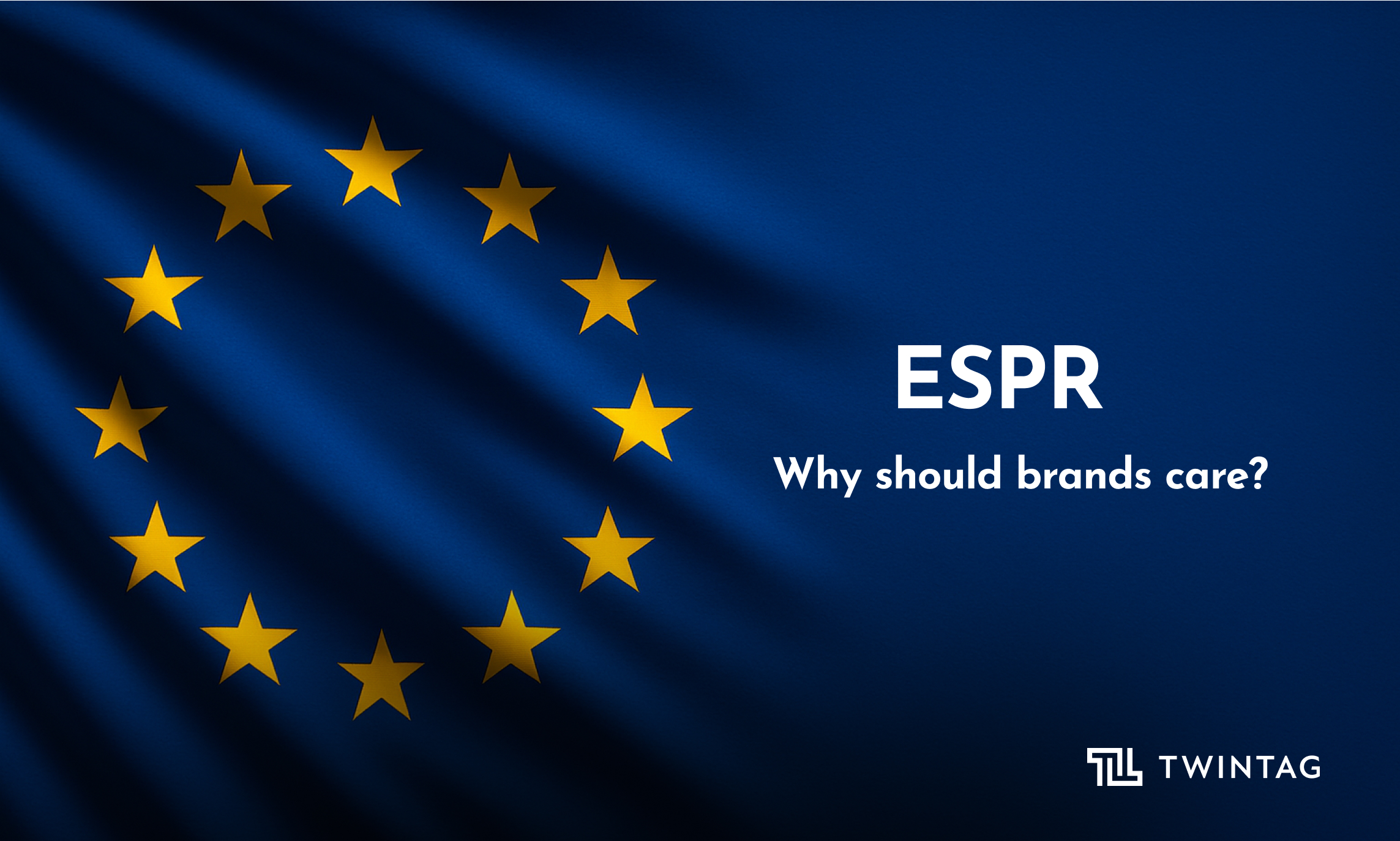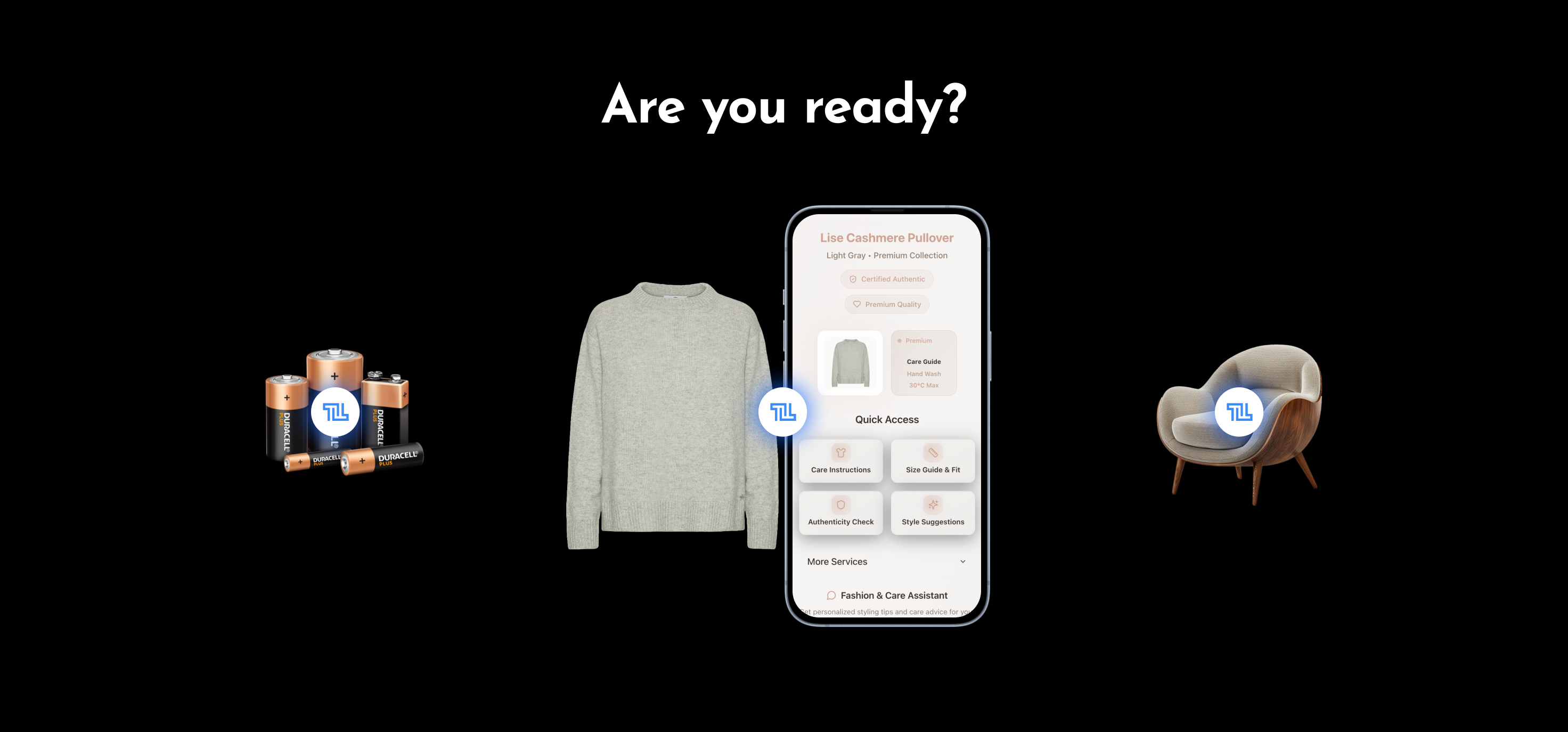How do you assign digital twins to your physical products? Build vs buy dilemma.
Digital transformation today requires traceability, digitization, and connected products, posing implementation dilemmas.
.png)
While building your solution for product tagging, tracing, or digital ID management gives you complete control over its development, it also requires taking on all associated costs and responsibilities—from future development to compliance and maintenance. This blog post explores the essential considerations businesses must evaluate when deciding on a digital strategy. Later, we will delve deeper into specific questions that need addressing when assigning digital twins to your products, ensuring that your digital strategy meets current demands and positions you for future success.
Considerations
Total Cost of Ownership
When deciding whether to build a solution or buy one, companies should think about the total cost of ownership. Building requires a big initial investment, plus ongoing costs for maintenance, upgrades, and security.
Other costs to consider:
- Software development cost itself
- Cost of technical leadership and project management
- Cost of building maintenance tools
- Security & standard compliance fees
- Cost of maintaining platform security
- Cost of maintaining DevOps expertise
- Cost of maintaining an extended IT support team
- Storage, hosting & cloud service fees
- Scale up investment
Conversely, choosing a SaaS platform offers a more predictable cost structure, typically characterized by lower setup costs and a straightforward yearly subscription fee. At Twintag, the fees are usually aligned with the adoption speed (volumes of tagged products), allowing for a healthy balance of costs and usage. This approach eliminates many of the hidden costs associated with in-house development. Moreover, a significant advantage of SaaS is its ability to seamlessly integrate updates and new features. As the platform evolves, all customers benefit from enhancements without incurring extra charges for adding features or software update fees.
Human Resources and Required Expertise
Based on our customer research, it takes approximately three full-time equivalents (FTEs) to set up and maintain an in-house solution. However, even with this investment, there's no guarantee that the internally built solution will fully meet expectations.
Building in-house demands a team proficient in software development, project management, and potentially, IT infrastructure. This requires initial and ongoing investment in dedicated personnel to handle maintenance and updates. Such commitment can divert valuable IT resources from your core business activities. The opportunity cost of reallocating these resources can be considerable, as it potentially limits your company's ability to focus on innovation and other critical business objectives.
"One of the biggest costs that is often overlooked is the value of lost opportunities during the time it takes to build and implement that software internally,” - CTO Twintag, Michiel De Backker.
In contrast, opting for a pre-existing solution alleviates the need for extensive internal development expertise. Instead, companies can rely on the vendor's specialized team, which not only brings technical expertise but also a deep understanding of the industry gained from working with other companies in this sector. This collaboration provides invaluable support and advisory services, reducing the burden on internal resources and ensuring smoother operations.
Choosing a SaaS platform also often grants access to a vast network of partners. This network can facilitate the physical aspects of integration, such as product labeling, leveraging their established relationships to streamline the entire process.
Time-to-market
From conceptualization to rolling out a minimum viable product (MVP), it can take from several months up to a year. This delay is extended further when aiming for a fully functioning and scalable solution.
However, Twintag offers the capability to deploy your first MVP within a few days, providing a swift and efficient path to market that in-house development processes usually cannot match. This rapid deployment allows companies to test, iterate, and scale their solutions within the first 6 months.
To enhance scalability, we offer a variety of options ranging from ready-to-use templates for rapid deployment to fully customized solutions tailored to meet specific business requirements. Leveraging our extensive industry experience, we provide expert advice on best practices, helping our customers streamline their processes and focus on their core strengths. Our platform is engineered to scale alongside your business, facilitating smooth expansion to more personas and digital experiences across more of your products without any bottlenecks.
Connecting your products with their digital twin: build or buy?
The dilemma of whether to build or buy is a common one in the realm of digital technology platforms. While the option to build internally might seem appealing, especially for organizations with substantial IT resources, it is essential to consider all the facets involved.
Therefore, before making a decision, we recommend thoroughly assessing your organization’s capabilities and needs. Ask yourself a few critical questions to determine whether an in-house development or leveraging a pre-built platform like Twintag is more conducive to your business goals:
- What kind of investment will it require financially and in terms of time and workforce to set up and maintain the system?
- Do you have the talent in-house to identify and capitalize on connected product opportunities?
- Do you have 2-3 Full-Time Equivalents (FTEs) with the necessary technical and project management expertise available to set up, design, develop, and maintain the platform as your company evolves?
- Have you calculated the total cost of ownership, including hidden costs like ongoing maintenance, updates, and security measures for an in-house solution?
- Are you prepared to invest in building tag and data administration tooling in addition to the main customer-facing solution?
- How critical is the time-to-market for your digital ID solution? Can your business afford the delay typical of building in-house?
- Is your current IT infrastructure scalable enough to meet future business growth and evolving demands? Can it support external integrations effectively?
- Are you confident your technology choice will accommodate the diverse connected product use cases surrounding your product?
- Will you build a dynamic, easily evolving solution or a neatly scoped but costly to adjust solution?
- Can your team ensure that the platform will continuously meet the latest security standards and regulatory compliance requirements, especially in handling sensitive or personal data?
- Are your internal systems cloud-enabled, and where will the product data be stored?
- Does your company have physical integration/product tagging solutions?
- Have you considered the value of continuous deployment of new platform features, ensuring the relevance of the software at any point in time, a fundamental principle of SaaS platforms like Twintag?
Twintag can help. At Twintag, we tailor our solutions to meet the unique needs of each customer. We don't believe in one-size-fits-all. Instead, we collaborate closely with you to understand and achieve your specific business objectives. Our experts work from the ground up, crafting flexible, scalable, and efficient digital twin solutions that propel your business forward.


-min.png)



